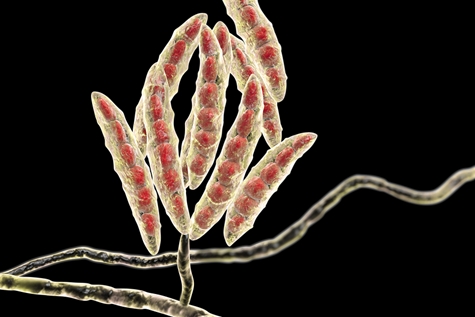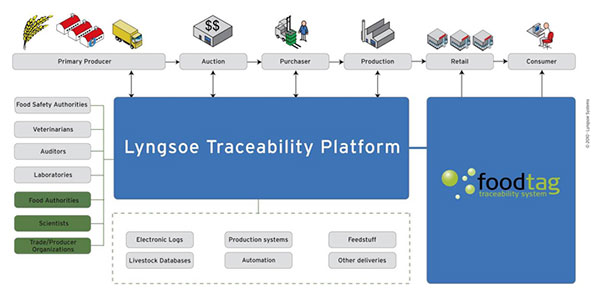MyCotoxins Linked to Malnutrition in Developing Countries
By: Allie Gallant
Mycotoxins are naturally-occurring toxic metabolites produced by fungi (moulds). It is estimated that about a quarter of the world’s food crops, including many staple foods, are affected by mycotoxin-producing fungi. In the supply chain, mould growth can happen in the pre-harvest phase, and during transport and storage due to inadequate drying.
Many mycotoxins can remain intact and be carried over into processed foods. The risk to human health depends on toxicity, contamination level and the amount of contaminated food that is consumed. In addition to human health risks, feeding livestock contaminated grain has been shown to decrease animal productivity, with an according reduction in the food supply.
Modern agricultural practices and the presence of a legislative framework have greatly reduced mycotoxin exposure in developed countries. However, in the developing world, where humid climates and crop storage conditions are often favourable for fungal growth and mycotoxin production, a large proportion of the population farm on a subsistence level, or use local, unregulated markets.
A lack of awareness about health risks related to mycotoxins and effective strategies to manage contamination has led to health problems in developing agricultural communities. Recent research has also revealed how a particular mycotoxin is impacting efforts to provide childhood nutrition in situations of poverty.
Mycotoxins Linked to Malnutrition
The impact of mycotoxins was investigated in a study conducted by the Institute of Tropical Medicine Antwerp in Belgium, with the Tanzania Food and Drugs Authority and Gent University, scientists revealed a link between stunted growth in Tanzanian infants with exposure to fumonisin, a mycotoxin derived from fusarium.
Before the link was made, stunted growth and low body weights in these regions were generally thought to be caused by substandard nutritional value in the complimentary maize porridge infants receive when breast milk is no longer available. However, research conducted in 2004 revealed that increasing the nutritional content of the maize porridge did not reduce the problem of growth retardation in Tanzanian toddlers, raising questions about how mycotoxins are impacting management of malnutrition in developing countries.
The study, that appeared in the journal Molecular Nutrition and Food Research, found that children of 12 months exposed to fumonisin above the World Health Organization maximum tolerable daily intake through their corn flour-based complementary food were significantly shorter and lighter than their counterparts. The scientists involved emphasized the need to protect infant food from fumonisin contamination, particularly in countries where corn is a staple.
Globally, one in three children suffer from growth retardation and one in four is underweight. Stunting and low body weights contribute to over 5 million deaths of children under the age of 5 each year. The majority of these deaths are associated with malnutrition. Health risks related to mycotoxins are exacerbated by poverty and malnutrition, highlighting the need for continued research on how these compounds affect food safety and nutritional aid in developing countries.
Mycotoxin Control in Developing Countries
In addressing mycotoxins as a food safety problem, difficulties arise in prioritizing the issue in communities where food sufficiency has not been achieved. In response, awareness campaigns have been launched to educate primary producers in developing countries about managing mycotoxins with simple and effective contamination prevention strategies.
To have more articles like this emailed to your inbox, become a GFSR Member today!

-
 FeaturedRisk management
The Cost of a Breach: What a Cyberattack Could Mean for Food Safety Recalls
FeaturedRisk management
The Cost of a Breach: What a Cyberattack Could Mean for Food Safety Recalls
-
 FeaturedRisk management
Securing the Food Chain: How ISO/IEC 27001 Strengthens Cybersecurity
FeaturedRisk management
Securing the Food Chain: How ISO/IEC 27001 Strengthens Cybersecurity
-
 FeaturedRisk management
Revolutionizing Food Safety Training: Breaking Out of the “Check-the-Box” Mentality
FeaturedRisk management
Revolutionizing Food Safety Training: Breaking Out of the “Check-the-Box” Mentality
-
 GFSI Standards
GFSI 2025: Building Trust, Tech-Forward Solutions, and Global Unity in Food Safety
GFSI Standards
GFSI 2025: Building Trust, Tech-Forward Solutions, and Global Unity in Food Safety
-
 FeaturedFood Safety
Integrated Pest Management: Strategies to Protect Your Brand’s Reputation
FeaturedFood Safety
Integrated Pest Management: Strategies to Protect Your Brand’s Reputation
-
 FeaturedFood Safety Culture & Training
No Open Door Policy: Challenges That Impact Pest Control in Food Processing Plants
FeaturedFood Safety Culture & Training
No Open Door Policy: Challenges That Impact Pest Control in Food Processing Plants




